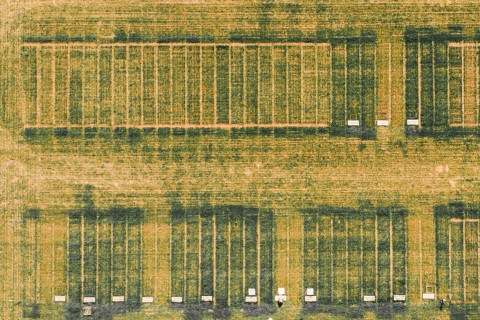Hydroxyl radical (OH) is a strong oxidant that initiates several chemical reactions in the atmosphere, including cloud formation and removing a powerful greenhouse gas, methane. On a global scale, the photolysis of atmospheric ozone is the primary OH source. However, nitrous acid (HONO) photolysis can also produce up to 60% of atmospheric OH at a given space and time and could exceed the contribution by ozone. Recent recognition of soil as a source of atmospheric HONO has changed OH sources' views and highlighted soil significance, especially agricultural soils in atmospheric chemistry. In his doctoral thesis, Hem Raj Bhattarai, M.Sc., demonstrates agricultural soils in the boreal ecosystem as a significant atmospheric HONO source.
HONO is a non-greenhouse gas produced in the soil nitrogen cycle. Global agricultural soils are a hotspot relating to the nitrogen gas dynamics because they receive substantial nitrogen as a fertilizer. Nevertheless, studies reporting HONO emissions from agricultural soils are limited, including from boreal agricultural ecosystems. In this thesis, using in-situ fertilized intact soil-cores, Bhattarai showed that HONO emissions increased with the increasing level of nitrogen in the soil. Further, using a globally grown food crop, wheat, as an experimental crop, Bhattarai demonstrated vegetation growth, especially initial phases including the germination, profoundly elevates HONO emissions from soils studied. These findings are the first ones from boreal agricultural ecosystems and apply to the agricultural soils in other ecosystems, as fertilization and crop production are global.
Although the potential link between the soil and atmospheric HONO was first reported in late 1960, it was only in 2013 when atmospheric HONO was tightly linked with the soil nitrogen cycle. However, soil nitrogen cycling processes that contribute to HONO formation in many ecosystems, including boreal agricultural ecosystems, have remained unexplored. Using the 15N tracer approach accompanied by the 15N pool dilution technique, Bhattarai, for the first time, successfully quantified the HONO emitted through soil microbial processes and abiotic processes and confirmed the former's dominance in the investigated soils. Further, he showed microbial denitrification as a significant process behind HONO formation in arable boreal agricultural soils. Also, Bhattarai highlighted the significance of HONO production via denitrification regarding the drastic seasonal change, for example, spring freeze-thaw, which is common in boreal ecosystems.
Earth's atmosphere is home to diverse chemical compounds and, thus, to atmospheric reactions, which are essential to maintain our atmosphere's chemical balance. To better understand the soil role in HONO formation and thus to atmospheric chemistry, this thesis proposes and highlights the necessity of studies using the 15N tracer approach to identify HONO formation processes, in-situ HONO measurements, and collaborative international work between soil ecologist and atmospheric chemist.
The doctoral dissertation of MSc MSc Hem Raj Bhattarai, entitled Understanding the production of nitrous acid (HONO) from boreal agricultural eco-systems will be examined at the Faculty of Science and Forestry on the 11th of December in Kuopio and online. The opponent in the public examination will be Professor Sara Hallin, Swedish University of Agricultural Sciences, Sweden and the custos will be Professor Marja Maljanen, University of Eastern Finland. The public examination will be held in English.



